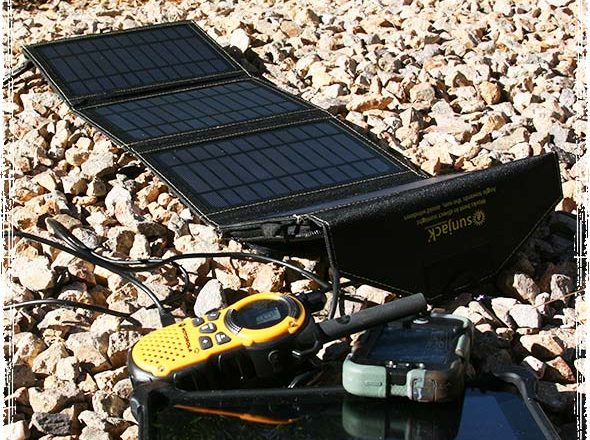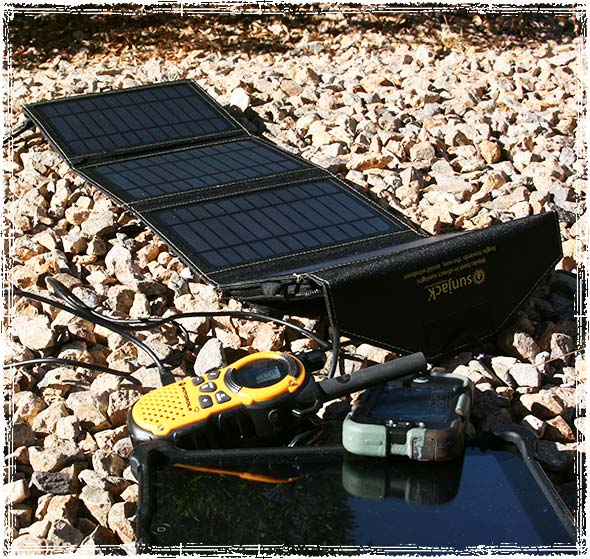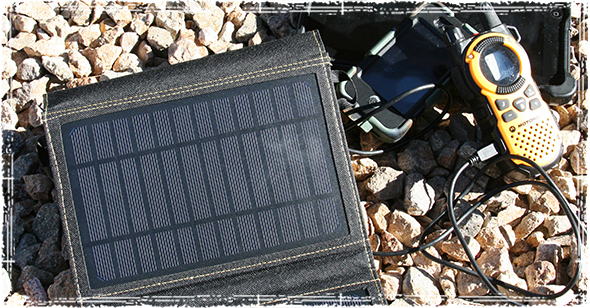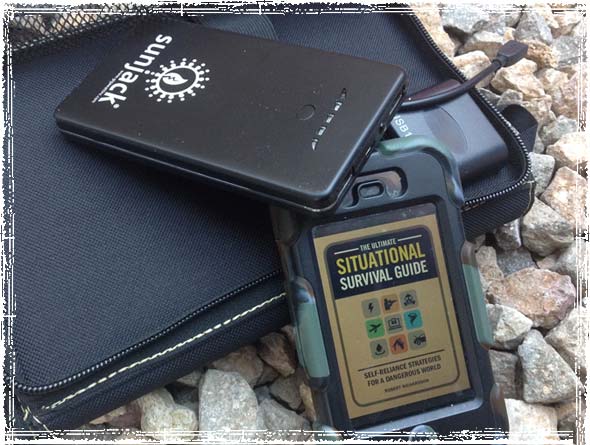I’m always on the lookout for new, dependable emergency power gear. During a grid-down scenario, or even when I’m just working out in the field, it’s always nice to have a way to power up my electronic devices.
I own, and have tested multiple portable solar chargers over the last couple years, and I’ve become a big fan of carrying some sort of backup power in my bug out bags, and my hunting packs. While I’m not very big on relying on electronic devices during an emergency situation, I can’t deny the benefit of having a good source of emergency power when things start to get rough.
From powering up things like flashlights, emergency radios and GPS devices, to being able to charge a dead cell phone when you’re out in the field, I must admit that I’ve grown pretty fond of some of my portable power devices. One of my new favorites, and one that I’ve added to my bug out bag, is the SunJack Portable Solar Charger.
The SunJack Portable Solar Charger in Action
Like I said, I’ve tested a ton of different solar chargers and backup power devices; the problem is, many of them are cheaply made, or take forever to actually charge anything. So when I got my hands on the SunJack solar charger I knew I had found something pretty special.
At only 6.75” x 9.25” x 1.75” when folded, the SunJack is the perfect size to either slip right into the glove compartment of your vehicle, or add to any bug out bag or urban EDC bag.
SunJack Technical Specifications:
Solar panels: 14 watts of high efficiency mono-crystalline
Max output voltage/current: Two 5V/2A USB ports
Battery Backup: 8,000mAh lithium-polymer battery
Battery Charge cycles: 1,000
SunJack Solar Charger Charging Speeds
Well here’s where the rubber meets the road; and where I’ve had a lot of problems with other solar chargers of this size. When I first started testing, I honestly wasn’t expecting anything that special; past experience usually meant sitting around for hours waiting for the battery meter to move. With the SunJack, that wasn’t the case.
In testing, I used two identical iPhones; both had around 35% showing on the battery meter. I put one on my iPad charger in the house, and the other I connected directly to the solar charger – bypassing the external battery. With other chargers I’ve had a hard time powering iPhones, but with the SunJack the charging speed was identical to the wall charger. In about 75 minutes both phones were at 100%.
iPhone Charging problems….
Now I will tell you that I did have a few problems with the iPhone, but as I’ve stated in other solar charger reviews the problem is with the iPhone itself, not the solar panels.When hiking with the charger clipped to my pack, every time the panel hit a shady spot the iPhone disconnected itself, and would not continue the charge until I unplugged, and then reattached the USB cord. The problem comes when the amperage suddenly changes; I believe the iPhone has a safety mechanism that prevents it from being charged until its reconnected. So if you’re going to be wearing the panels clipped to your pack, you need to plug them directly to the included 8,000mAH backup battery.
The Battery Backup
The SunJack comes with an 8,000mAH battery backup. When connected to the panels it takes about 5 hours to fully charge the unit. Once charged you have enough extra juice to charge an iPad about 1.5 times, or a typical smart phone about 4 times.
The battery has 2 USB charging ports: a 1Amp output, suitable for charging phones, GoPros, walkie-talkie radios, and GPS devices; and a 2Amp output which will power iPads, tablets, and devices that require the higher amperage.
Overall Thoughts on the SunJack Solar Charger
Overall I’m pretty impressed with the SunJack Solar Charger; it’s earned its place in my bag.
Where to Buy Them:
At $150 for the 14W SunJack, which comes with one 8,000mAH battery; and $250 for the 20W SunJack, which comes with two 8,000mAH batteries, this is one of the more affordable, and reliable portable solar chargers on the market.








